Wood Duck: Nature’s Masterpiece of Color and Elegance
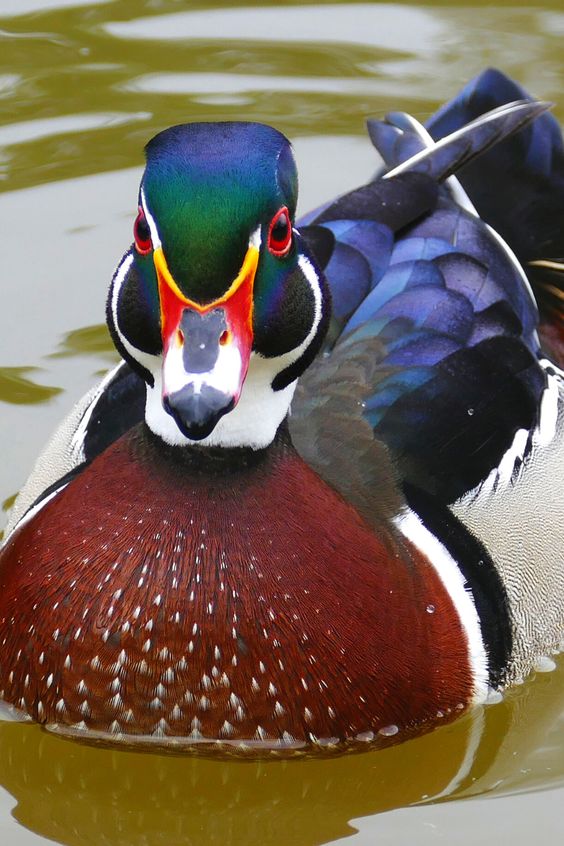
In the realm of waterfowl, few can rival the exquisite beauty of the Wood Duck (Aix sponsa). With its vibrant plumage and graceful demeanor, this avian marvel is often regarded as nature’s masterpiece. Found in North America, the Wood Duck captivates onlookers with its striking colors and elegant presence.
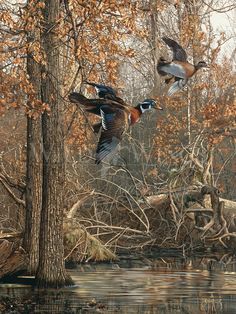
The male Wood Duck is a true showstopper. Its head boasts a kaleidoscope of iridescent hues, including shimmering green, deep purple, and rich bronze. A distinctive white stripe runs from its throat to the sides of its face, accentuating its striking features. Its eyes, a bright red, seem to reflect its regal nature. The body of the male Wood Duck is adorned with a mix of chestnut and dark green, intricately patterned with bold white stripes and speckles. Its wings, when spread, reveal a mesmerizing display of contrasting colors, from deep blues to bright yellows.
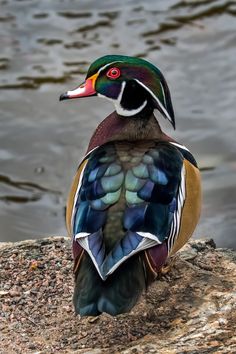
The female Wood Duck, although less flamboyant, possesses her own unique charm. She displays a more subdued combination of gray, brown, and white feathers. This muted palette provides her with excellent camouflage, allowing her to blend seamlessly into her surroundings, especially when nesting among tree cavities or near water bodies.
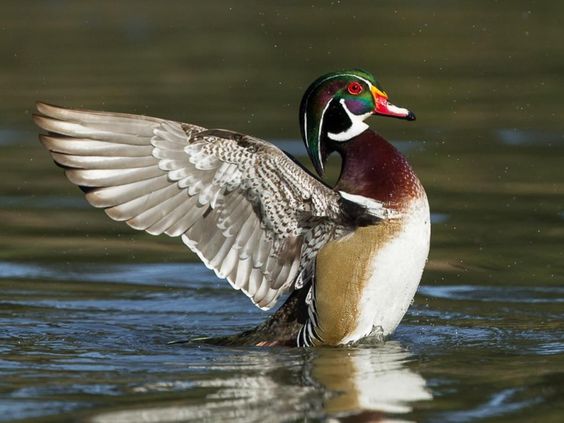
One of the most remarkable aspects of the Wood Duck is its habitat preference. Unlike many other ducks, the Wood Duck is equally at home in wooded areas as it is in water. It can be found nesting in tree cavities, often high above the ground, using the protection of hollowed-out trees or man-made nest boxes. This behavior sets it apart from most other waterfowl species and adds to its allure.
The Wood Duck’s dietary habits further contribute to its uniqueness. While it primarily feeds on aquatic vegetation, seeds, and insects found in wetland habitats, it is also known for its ability to perch on tree branches and feed on berries and nuts. This versatile foraging behavior showcases its adaptability and resourcefulness.
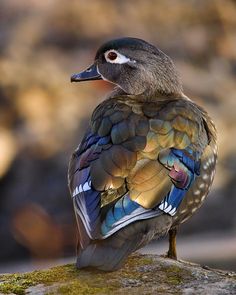
The Wood Duck’s charm extends beyond its visual splendor. Its vocalizations are a melodic blend of whistles, squeals, and calls that echo through the tranquil wetlands it inhabits. These vocal displays are often heard during courtship rituals or as a means of communication within the flock.
Despite its undeniable allure, the Wood Duck has faced challenges in the past. Habitat loss, hunting pressures, and competition from non-native species have threatened its population. However, conservation efforts and habitat restoration initiatives have led to a resurgence of this magnificent species.
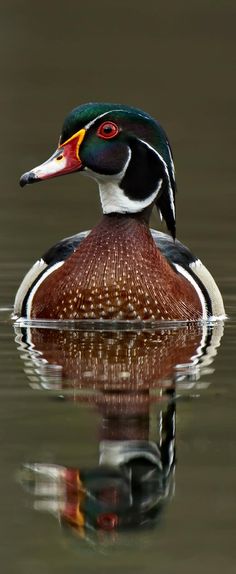
Today, bird enthusiasts and nature lovers have the privilege of witnessing the Wood Duck’s enchanting presence in wetlands, lakes, and forested areas across North America. Its colorful plumage, graceful flight, and unique nesting behavior continue to captivate all who encounter it.
The Wood Duck, nature’s masterpiece of color and elegance, serves as a reminder of the remarkable diversity and beauty found within our natural world. Its presence in our lives is a testament to the importance of conservation and the need to protect the habitats that sustain such awe-inspiring creatures.



